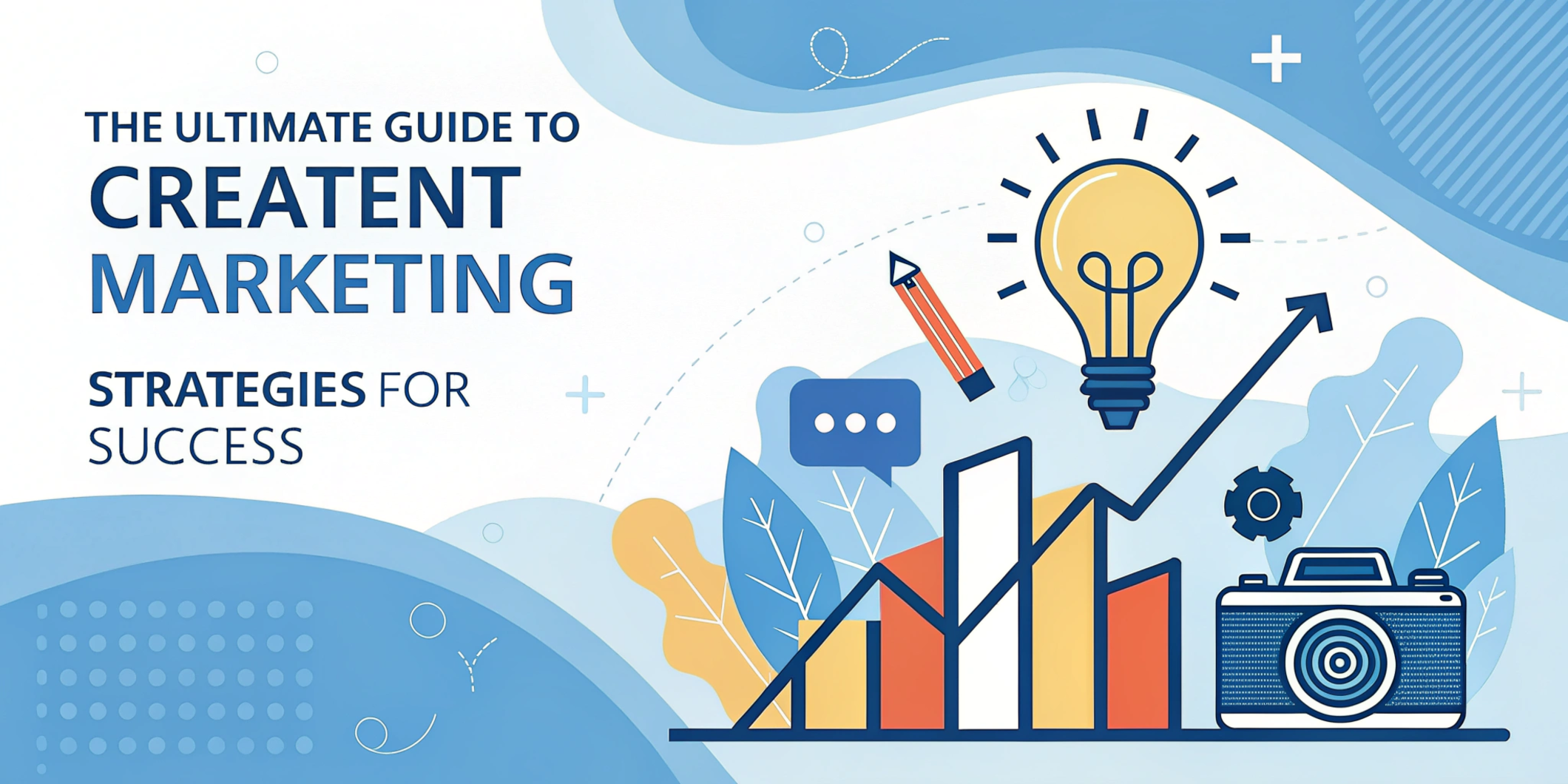The Ultimate Guide to Creative Content Marketing: Strategies for Success
Content marketing is no longer just about churning out blog posts or social media updates. In the digital era, creativity is the key to capturing and retaining audience attention. With social media platforms evolving constantly, brands must embrace innovative content marketing strategies to stay ahead. In this comprehensive guide, we’ll explore the best practices for creative content marketing that can enhance engagement, build brand awareness, and drive conversions.
What is Creative Content Marketing?

Creative content marketing involves crafting unique, valuable, and engaging content tailored to a specific audience. It’s about using storytelling, visual design, interactivity, and innovation to capture attention and encourage engagement. Unlike traditional content marketing, which focuses on information, creative content marketing leverages emotions, experiences, and entertainment to build deeper connections with the audience.
Why Creativity Matters in Content Marketing
- Breaks Through the Noise – Millions of blog posts, tweets, and videos are published daily. Creative content helps brands stand out in a crowded digital space.
- Boosts Engagement – Unique and interactive content generates more likes, shares, and comments, increasing brand visibility.
- Improves Brand Recall – Memorable and creative content helps audiences remember your brand, leading to higher trust and loyalty.
- Encourages Virality – Content that is fun, emotional, or thought-provoking has a higher chance of going viral.
- Enhances SEO – Engaging content attracts backlinks and social shares, which contribute to improved search engine rankings.
Types of Creative Content Marketing
1. Storytelling-Based Content
Storytelling is a powerful way to engage audiences emotionally. Whether it’s customer testimonials, brand origin stories, or user-generated content, stories add a human touch to marketing. Brands like Apple and Nike use compelling narratives to create strong brand identities.
How to Implement:
- Share success stories of customers using your product.
- Create behind-the-scenes content about your brand’s journey.
- Use case studies to demonstrate real-world impact.
2. Interactive Content
Interactive content, such as quizzes, polls, calculators, and surveys, boosts engagement by encouraging audience participation. Buzzfeed’s viral quizzes are a prime example of interactive content marketing.
How to Implement:
- Develop personality quizzes related to your industry.
- Create interactive infographics that allow users to explore data visually.
- Use calculators for pricing, ROI estimation, or fitness tracking.
3. Video Marketing & Live Streaming
Video content has taken over social media, with platforms like TikTok, Instagram Reels, and YouTube Shorts dominating user engagement. Live streaming also adds authenticity, allowing brands to interact with their audience in real-time.
How to Implement:
- Create explainer videos showcasing your products or services.
- Host live Q&A sessions, webinars, or product demonstrations.
- Produce short, engaging videos optimized for different social media platforms.
4. User-Generated Content (UGC)
User-generated content builds trust and community by showcasing real experiences from your customers. UGC is highly authentic and drives engagement.
How to Implement:
- Encourage customers to share their experiences with your brand using a branded hashtag.
- Feature customer reviews, photos, or testimonials on your website and social media.
- Run contests that incentivize users to create content about your brand.
5. Memes & Trend-Based Content
Memes and viral trends are a fun way to connect with your audience in a relatable manner. Many brands successfully use meme marketing to engage younger demographics.
How to Implement:
- Keep up with trending hashtags and challenges on platforms like TikTok and Twitter.
- Adapt viral memes to align with your brand’s voice and message.
- Create humor-based content that resonates with your audience.
6. Podcasts & Audio Content
Podcasting is a rising trend in content marketing. Brands that leverage audio content can build deeper relationships with their audience.
How to Implement:
- Start a podcast discussing industry trends and expert interviews.
- Use audio snippets to share valuable insights on social media.
- Collaborate with influencers or experts in your niche to co-host episodes.
SEO Best Practices for Creative Content

To ensure your content ranks well on search engines, follow these SEO strategies:
1. Keyword Optimization
- Use primary and secondary keywords naturally within your content.
- Include long-tail keywords to target specific queries.
- Optimize headings, meta descriptions, and image alt text with relevant keywords.
2. High-Quality Content
- Ensure your content is well-researched, valuable, and informative.
- Avoid keyword stuffing and focus on natural language.
- Write engaging introductions and strong conclusions.
3. Mobile Optimization
- Make sure your content is mobile-friendly.
- Use responsive design and fast-loading images.
- Keep paragraphs short for easy readability on smaller screens.
4. Internal & External Linking
- Link to relevant internal pages to improve site navigation.
- Use authoritative external links to support your content.
5. Social Sharing & Backlinks
- Encourage readers to share your content on social media.
- Collaborate with influencers and industry leaders to gain backlinks.
- Create shareable infographics and videos to increase link-building opportunities.
Measuring the Success of Creative Content Marketing

To track and improve your content marketing efforts, use these key performance indicators (KPIs):
- Engagement Metrics – Track likes, shares, comments, and time spent on the page.
- Traffic Analytics – Monitor website visits and referral sources.
- Conversion Rates – Measure how many visitors turn into leads or customers.
- Bounce Rate – Analyze how quickly users leave your content.
- SEO Performance – Use tools like Google Analytics and Ahrefs to track keyword rankings and backlinks.
Final Thoughts
Creative content marketing is the future of digital branding. By embracing storytelling, interactive media, video content, and emerging trends, businesses can forge stronger connections with their audience. Implementing SEO best practices alongside creative strategies ensures long-term visibility and engagement.
Start experimenting with different content formats, analyze performance metrics, and continuously refine your approach. The brands that innovate will be the ones that dominate in the evolving world of content marketing.

